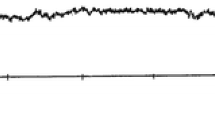Abstract
Intensifying effects of ferrous sulfate and pyrite on bioleaching of low-grade molybdenite concentrate were studied in this paper. The experimental results show that the oxidation dissolution of molybdenite can be accelerated with the addition of either ferrous sulfate or pyrite in bioleaching medium. Pyrite has better enhancing effect than ferrous sulfate, and the highest molybdenum leaching rate in pyrite-added solutions is 20.85 %, increasing by 12.64 % compared with that in 9 K leaching system. Molybdenum leaching rate does not increase linearly with the increase of the addition of either ferrous sulfate or pyrite in each type solution. Great amounts of [NH4Fe3(SO4)2(OH)6] and [KFe3(SO4)2(OH)6] with different morphologies will be deposited on molybdenite ores when the additions of Fe from ferrous sulfate or pyrite exceed that from 9 K leaching system by 0.5 times, and these deposits hinder the oxidation dissolution of molybdenite to some extent.








Similar content being viewed by others
References
Abdollahi H, Shafaei SZ, Noaparst M, Manafi Z, Aslan N. Bio-dissolution of Cu, Mo and Re from molybdenite concentrate using mix mesophilic microorganism in shake flask. Trans Nonferrous Met Soc China. 2013;23(1):219.
Yu J, Yang HY, Chen YJ, Fan YJ. Extraction of molybdenum from low grade molybdenum concentrates. J Northeast Univ (Nat Sci). 2011;32(8):1141.
Deng GC, Xing NN, Li GF, Ju ZN, Ye LL. Effect of roasting fluxes for recovery of molybdenum on low grade molybdenum concentrate. J Liao Ning Univ (Nat Sci). 2009;36(4):349.
Fu JG, Zhong H, Wu JL, Pu XM. Wet leaching of molybdenite at atmospheric temperature and pressure. Metal Mine. 2004;12:35.
Parsons GJ, Brimacombe JK, Peters E. Computer simulation of a molybdenite leaching process using dilute nitric acid. Hydrometallurgy. 1987;17(2):133.
Vizsolyi A, Peters E. Nitric acid leaching of molybdenite concentrates. Hydrometallurgy. 1980;6(1):103.
Gu H, Li HG, Liu MS. Study on new wet leaching of molybdenite. China Molybd Ind. 1997;10:29.
Khoshnevisan A, Yoozbashizade H, Mozammel M, Sadrnezhaad SK. Kinetics of pressure oxidative leaching of molybdenite concentrate by nitric acid. Hydrometallurgy. 2012;111(2):52.
Cao ZF, Zhong H, Liu GY, Qiu YR, Wang S. Molybdenum extraction from molybdenite concentrate in NaCl electrolyte. J Taiwan Inst Chem Eng. 2010;41(3):338.
Cao ZF, Zhong H, Qiu ZH, Liu GY, Zhang WX. A novel technology for molybdenum extraction from molybdenite concentrate. Hydrometallurgy. 2009;99(1):2.
Barr DS, Lindstorm RE, Hendrix JL. Control of the chlorate factor in electrooxidation leaching of molybdenum concentrates. Int J Miner Process. 1975;2(4):303.
Barr DS, Scheiner BJ, Hendrix JL. Examination of the chlorate factor in electro-oxidation leaching of molybdenite concentrates using flow-through cells. Int J Miner Process. 1977;4(2):83.
Askari ZMA, Hiroyoshi N, Tsunekawa M, Vaghar R, Oliazadeh M. Bioleaching of Sarcheshmeh molybdenite concentrate for extraction of rhenium. Hydrometallurgy. 2005;80(2):23.
Gregory JO, Thomas RC. Bioleaching of molybdenite. Hydrometallurgy. 2008;93(1):10.
Li CX, Luo YQ, Ren RC, Cheng Q, Man D. Enriching metal elements of carbonaceous molybdenum-nickel ore before leaching. Chin J Rare Met. 2013;37(2):289.
Jia JP, Shen ZM, Zhou H. Development of electrochemical methods in waste water treatment. Shanghai Environ Sci. 1999;18(1):29.
Ehrlich HL. Past, present and future of biohydrometallurgy. Hydrometallurgy. 2001;59(2):127.
Wu B, Wen JK, Chen BW, Yao GC, Wang DZ. Control of redox potential by oxygen limitation in selective bioleaching of chalcocite and pyrite. Rare Met. 2014;33(5):622.
Cao ZF, Zhong H, Wen ZQ, Fu JG, Ding C. Research on ultrasonic electro-oxidation process of MoS2 concentrate. J China Univ Min Technol. 2009;38(2):229.
Chen JW, Gao CJ, Zhang QX, Xiao LS, Zhang GQ. Leaching of nickel-molybdenum sulfide ore with sulfolobus metallicus. Chin J Process Eng. 2009;9(2):257.
Roya MG, Seyed MB, Seyyed MM. Bacterial leaching of a spent Mo–Co–Ni refinery catalyst using acidithiobacillus ferrooxidans and acidithiobacillus thiooxidans. Hydrometallurgy. 2011;106(1):26.
Pradhan D, Patra AK, Kim DJ, Chung HS, Lee SW. A novel sequential process of bioleaching and chemical leaching for dissolving Ni, V, and Mo from spent petroleum refinery catalyst. Hydrometallurgy. 2013;131(1):114.
Tong LL, Yang HY, Zhang Y, Zhang GP. Effect of acidithiobacillus ferrooxidans on leaching out chalcopyrite and pentlandite. J Northeast Univ (Nat Sci). 2010;31(11):1591.
Daoud J, Karamanev D. Formation of jarosite during Fe2+ oxidation by acidithiobacillus ferrooxidans. Miner Eng. 2006;19(9):964.
Jensen AB, Webb C. Ferrous sulfate oxidation using thiobacillus ferrooxidans: a review. Process Biochem. 1995;30(3):231.
Acknowledgments
This study was financially supported by the National Natural Science Foundation of China (Nos. 51304151 and 51174062), and the High-Tech Research and Development Program of China (No. 2012AA061501).
Author information
Authors and Affiliations
Corresponding author
Rights and permissions
About this article
Cite this article
Yu, J., Yang, HY., Tong, LL. et al. Intensified bioleaching of low-grade molybdenite concentrate by ferrous sulfate and pyrite. Rare Met. 34, 207–214 (2015). https://doi.org/10.1007/s12598-014-0437-6
Received:
Revised:
Accepted:
Published:
Issue Date:
DOI: https://doi.org/10.1007/s12598-014-0437-6




